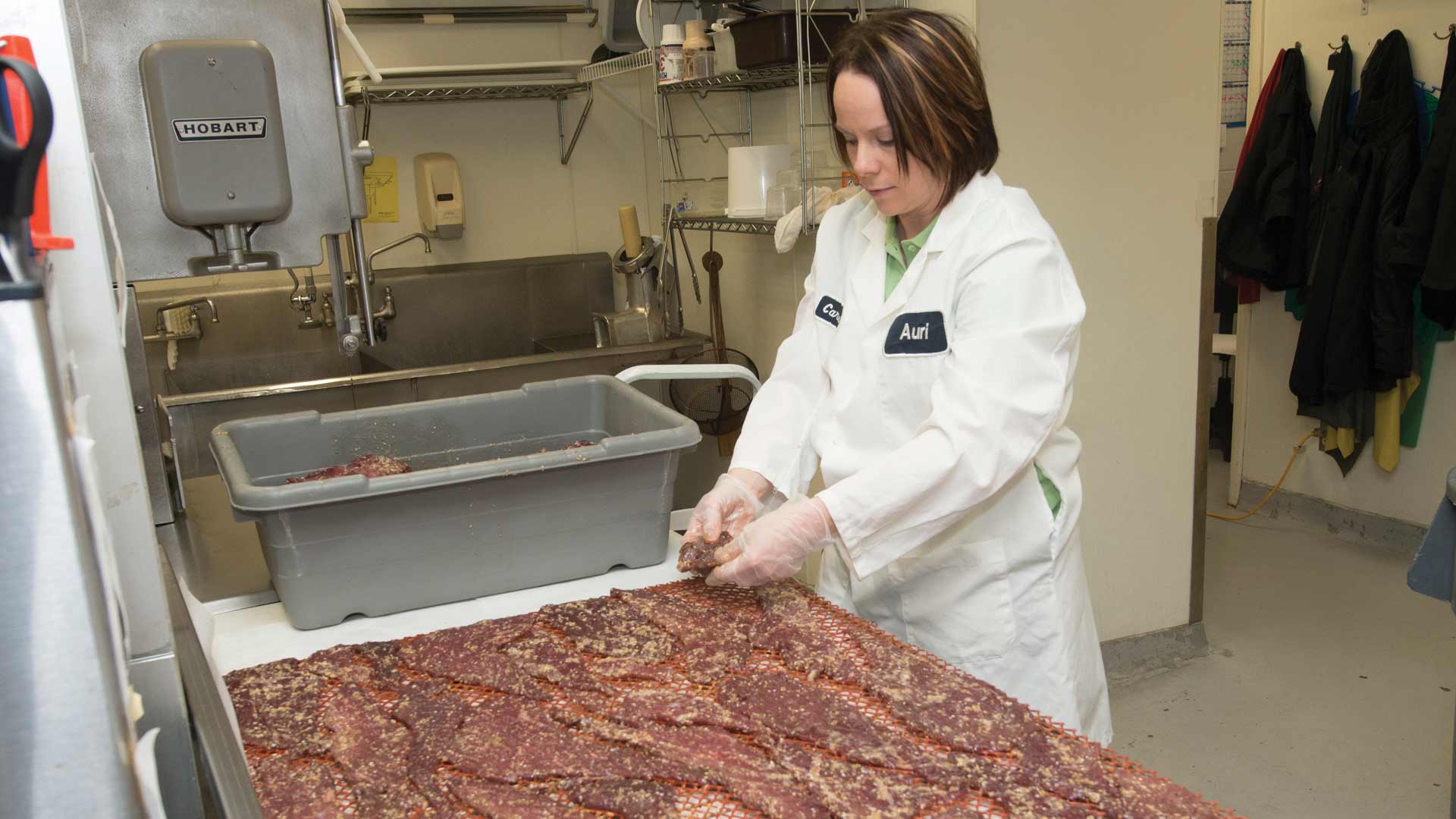–by Liz Morrison
When Carissa Nath was working on her graduate degree in meat science, people used to say, “Oh, so you’re going to be a meat inspector?”
Some meat scientists do indeed work as federal or state inspectors in packing plants. But meat science is much broader.
Nath works with Minnesota’s small meat processors — the state boasts nearly 300 — on new product development, food safety, quality control, and a host of other support services. “I try to serve as the research and development expert for smaller Minnesota processors.”
Nath has helped develop more than a dozen new meat products at AURI’s state-of-the-art meat lab in Marshall, Minnesota. She has trained hundreds of meat processors in Hazard Analysis and Critical Control Point (HACCP) food safety procedures. And she’s had the satisfaction of “helping entrepreneurs get their products into the market.”
It started with 4-H
Nath, a Texas native, participated in livestock judging during her 4-H years, and studied animal science at Texas Tech University. As an undergraduate, she participated in meat judging and worked on food safety research at the Texas Tech meat lab. Those experiences “piqued my interest in meat science,” she says.
Nath went on to earn a master’s degree in meat science at South Dakota State University (SDSU), doing research on food safety and meat quality. After graduate school, she was a research assistant at SDSU for a year, then joined AURI in 2008.
Doing a little of everything
In a typical week, Nath might
- teach at a food safety seminar;
- advise a small meat processor on quality control or regulatory compliance;
- review the label for a new meat product; and
- go over packaging options with a client.
Nath conducts four HACCP food safety workshops each year around the state with University of Minnesota meat science professor Ryan Cox and the Minnesota Department of Agriculture. She also serves as technical adviser for the Minnesota Association of Meat Processors, and works closely with officials from the Minnesota State Meat Inspection Program.
But the majority of her time is spent with entrepreneurs on product development and testing. “It typically takes at least six months to develop a new meat product,” Nath says.
The process often begins with a client’s family recipe. Nath will scale up the recipe for commercial quantities, then head to the AURI meat lab to begin testing and revising the formula. Taking a home cook’s recipe from teaspoons and cups up to pounds is not straightforward, Nath says. “That’s the fun part—using science to see what went wrong and how to improve.”
Then Nath conducts sensory analysis and consumer taste tests. She also offers advice on shelf life, and helps with ingredient sourcing and co-packing contacts, as well as packaging and labeling decisions. AURI can also connect clients with business planning and marketing services, she adds.
“What I find really rewarding is to take a product idea and apply ‘geeky’ science to create a marketable commercial product for the client.”
What does a meat scientist do?
- Research the effects of feed on meat quality, feed conversion, and other production variables
- Inspect meat before and after slaughter to make certain it is free of disease, harmful bacteria and contaminants
- Ensure humane treatment of livestock at
packing plants - Procure animals for slaughter
- Evaluate and grade carcasses
- Develop and monitor food safety procedures at processing plants
- Create and test new recipes and products
- Improve existing products and processing techniques
- Conduct sensory analysis and consumer testing of meat products
- Ensure regulatory compliance
- Improve shelf life, packaging and labeling
- Educate processors and consumers
